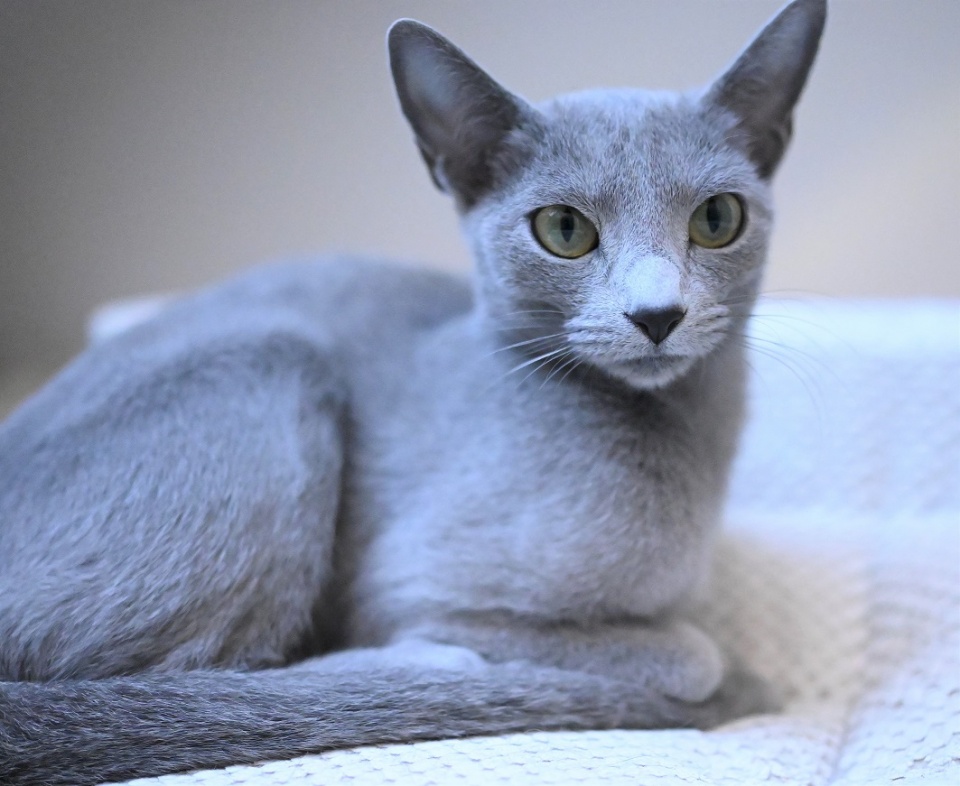
Physical Characteristics
Personality and Temperament
Personality and Temperament
This cat knows how to behave and is easy to train. Or, it’s easy to teach its people. It likes to play fetch and will keep going even if you don’t have time. You will make time, though, because the Russian Blue is known for looking hurt when ignored. This cat is exquisite and shy, but also very playful and loves chasing toys and sunbeams.
The Russian Blue can entertain itself for hours, and it doesn’t mind too much if you leave it home alone all day. However, I will be delighted to see you when you come home. This cat is an excellent pet because it always follows its owners around and likes one person in the family more than the others. It should also be said that the Russian Blue gets along with most people, even kids. They love being around people so much that they will act like clowns to make a crying baby stop crying and pat a sad person’s face when they have the blues.
One weakness of the Russian Blue is that it tends to be easily startled. It is also more likely to be shy and nervous around new people and in strange places. Some people say that this breed was once the target of fur hunters. If this is true, it would explain why it is cautious and moves quickly. It would have had to move quickly at the first sound of trouble to save its lives.
This breed doesn’t like change and would rather have things stay the same and predictable. It can be thrown off if the time for dinner changes, and it is very picky about cleanliness. If the litter box is dirty, it won’t even go in it. Early on, this breed got a bad name at cat shows for being hard to work with because of things like these. At home, the Russian Blue was calm and happy, but it was grumpy and unhappy at shows. Fewer Russian Blues were shown, and the breed’s popularity fell until breeders worked to improve the breed’s attitudes through selective breeding and behavior management (e.g., soft music, recordings of show noises, crystals, and herbal remedies). This dedication to the breed paid off, and now the Russian Blue enjoys going to cat shows.
Health and Care
Health Care
The Russian Blue doesn’t have any specific health problems. It is a healthy breed, mostly because it has always existed. Brushing the coat isn’t necessary, but it’s a nice thing to do once a week in addition to brushing the teeth. This breed enjoys being around people and will sit still while being combed or brushed because it gets to spend time with the person who cares for it.
One important thing to remember about this breed is that it loves food. If it can eat as much as it wants, it will eat more than it needs and ask for more, which makes it a sure candidate for weight-related health problems. The best way to stop this is to measure the food and only give it to the cat at certain times of the day. Everyone in the house should know they can’t give the cat too many treats or scraps.
